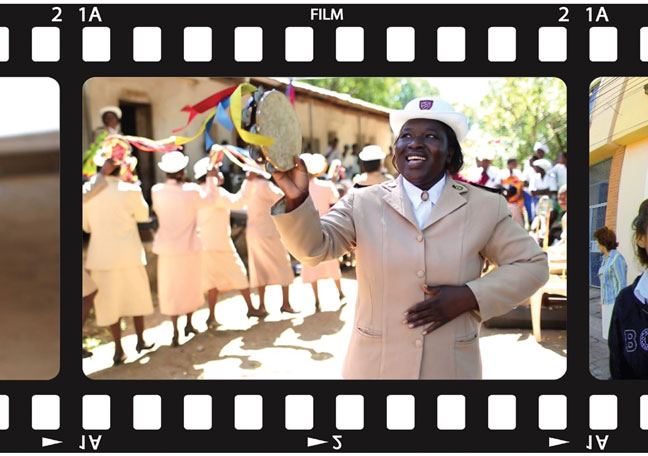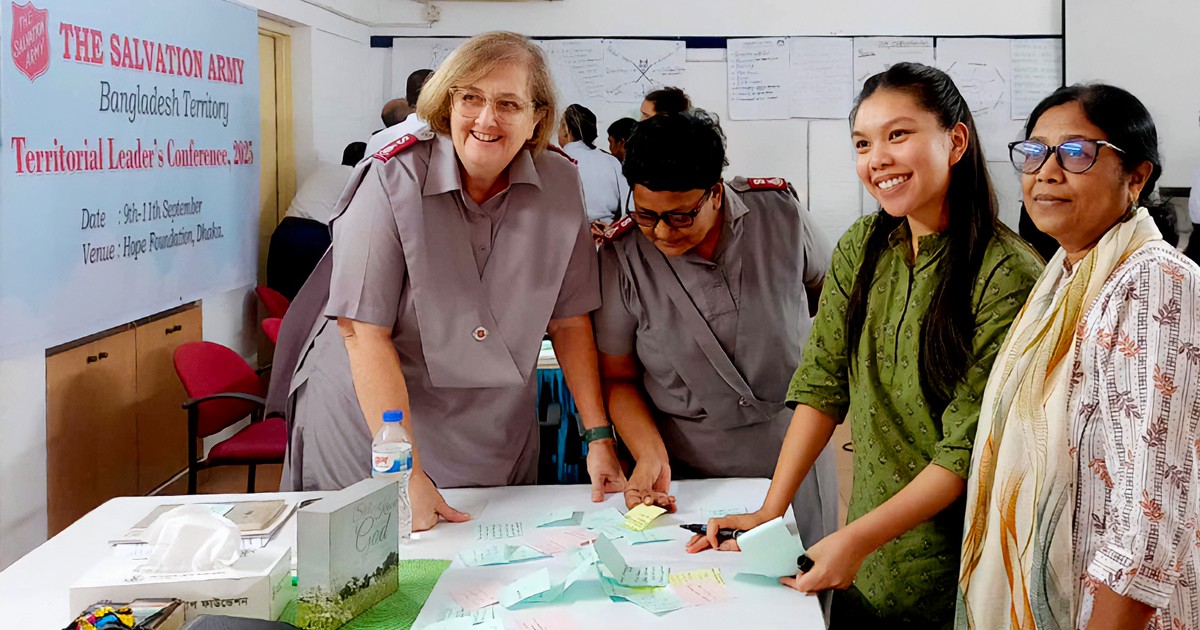Have you seen the video “There is Happy in The Salvation Army” (above)? It uses the music and lyrics of Happy by Pharrell Williams to illustrate what happiness means to us in the day-to-day work of The Salvation Army. The director, Matthew Osmond, has captured the many faces of our ministry and service in a joyful, spirited way—from the front lines to administration, from our territory to around the world. It reminds us that even though we are a diverse workforce with varied responsibilities, we are united in our common desire to fulfil the mission of The Salvation Army.
The video, while playful in its delivery, presents an important condition: “Clap along if you know what happiness is to you.” It's a reference to our happiness quotient, which is defined as the satisfaction we earn from our work, apart from the monetary remuneration received. This has both personal and corporate implications.
Personally, the challenge is to regularly test my level of engagement. Am I giving my best? If not, why not? In his book, Working with Emotional Intelligence, Daniel Goleman suggests that we are at our best when we are working in a state of “flow.”
“Flow blossoms when our skills are fully engaged—say, by a work project that stretches us in new and challenging ways. The challenge absorbs us so much we lose ourselves in our work, becoming so totally concentrated we may feel 'out of time,' ” he writes. “In this state, we seem to handle everything effortlessly, nimbly adapting to shifting demands. Flow itself is a pleasure. Of course, what gives people such pleasure varies: a machinist may love the challenge of a difficult weld; a surgeon gets contentedly absorbed in a complex operation; an interior designer finds delight in the creative play of pattern and colour. When we work in flow, the motivation is built in—work is a delight in itself.”
From a spiritual perspective, we are at our best when we are working from our giftedness. In a fun way, this is what Osmond's video has captured. Whether we are officers, employees, volunteers, Salvationists or friends of the Army, we experience deep satisfaction and joy as we offer our gifts to each other.
Corporately, the challenge is to regularly gauge the health of the organization to ensure an environment where people are able to work in “flow.” In his book, The Advantage, Patrick Lencioni writes, “At its core, organizational health is about integrity; but not in the ethical or moral way that integrity is defined so often today. An organization has integrity—is healthy—when it is whole, consistent and complete, that is, when its management, operations, strategy and culture fit together and make sense.”
Just as our physical health benefits from regular check-ups, our organizational health benefits from regular check-ups, too. How often do we intentionally step back to confirm the appropriateness and effectiveness of what we are doing?
In the personnel services department, we are in the midst of such a review. We're asking:
- Does our recruitment process place people in positions that best use their gifts, skills and experience?
- Are our development plans intentional and connected to goals that align with organizational needs and strategies?
- Are our systems, processes and policies supporting rather than impeding, clarifying rather than confusing? Do they work seamlessly across all levels of the organization?
Sometimes the process is painful. We don't always get it right, but we are committed to seeking the more excellent way.
The words of an old hymn by Thomas Kelly remind us of the true source of happiness in The Salvation Army: “Happy we who trust in Jesus, sweet our portion is and sure; When despair or doubt would seize us, by his grace we shall endure. Happy people, happy in his love secure!”
Lt-Colonel Jamie Braund is the secretary for personnel for the Canada and Bermuda Territory.










Leave a Comment